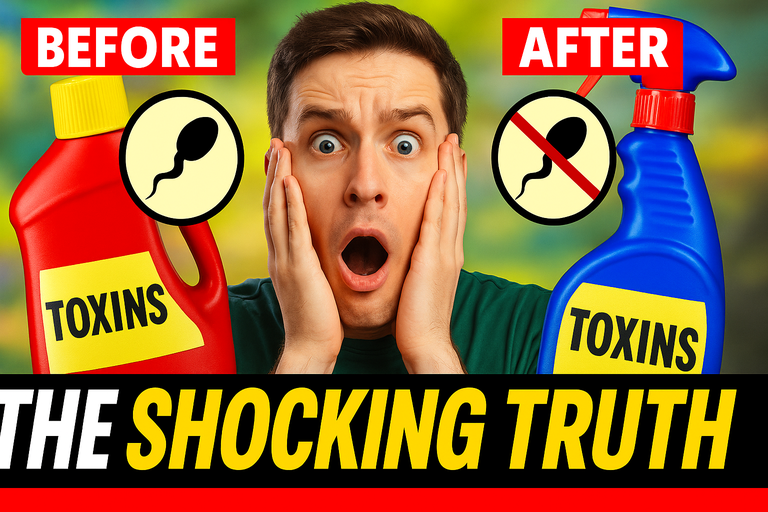
Did you know your morning cup of coffee or that new fragrance you love could be quietly impacting your fertility?
I know—I didn’t want to believe it either. Picture this: You’re doing all the “right things” (tracking your cycle, eating your leafy greens, getting those prenatal vitamins in), and yet, the journey to conception feels like a never-ending maze. It turns out, there’s a sneaky culprit lurking in our everyday lives, and it’s not just about what’s on your plate or calendar.
Recently, I stumbled upon a jaw-dropping article on Natural News that pulled back the curtain on a topic too few of us are talking about: endocrine disruptors. These invisible troublemakers are everywhere—from plastics to cosmetics to our cleaning routines. The article, which dives into a major review in Nature Reviews Endocrinology, lays it out plainly: endocrine disruptors can quietly sabotage egg quality, speed up premature menopause, and make the road to parenthood a lot bumpier than it should be.
But what ARE endocrine disruptors, and how are they invading our lives?
If you’re anything like me, you might have thought, “Oh, as long as I buy BPA-free bottles, I’m in the clear.” Not quite. Endocrine disruptors include:
- BPA (yes, still found in some cans and plastics!)
- Phthalates (hello, scented candles and soft plastics)
- Parabens (your ‘natural’ shampoo might be hiding these)
- Pesticides (even on the “healthy” produce)
- Flame retardants (sneaky, right?)
These chemicals mimic hormones in the body, creating chaos in your delicate reproductive system. Over time, they can disrupt ovulation, lower the quality of your eggs, and increase the likelihood of earlier menopause. The scary part? You can’t always see or smell them.
Why Does This Matter Now More Than Ever?
Here’s the kicker—the world in 2025 is more aware than ever about what we put IN and ON our bodies, but the statistics on fertility challenges are still climbing. Finding out that our homes—our supposed safe spaces—might be ground zero for fertility-harming toxins was honestly the wake-up call I didn’t expect.
But don’t panic! There ARE practical steps we can take. You’re not powerless, and every small change counts.
5 Game-Changing Ways to Safeguard Your Fertility at Home
- Switch to Glass or Stainless Steel: Ditch plastics for food storage and water bottles, even if they claim to be “BPA-free.”
- Go Fragrance-Free: Choose unscented or naturally-scented cleaning and personal care products. (Hint: “fragrance” on an ingredient list is usually code for a chemical cocktail.)
- Read Every Label: Avoid parabens, phthalates, and triclosan in shampoos, makeup, and lotions. There are plenty of apps to help you decode these ingredients!
- Eat Organic—When You Can: Focus on the “Dirty Dozen” fruits and veggies most likely to carry pesticide residue.
- Air It Out: Ventilate your home often, especially after using new furniture, carpets, or electronics, which can “off-gas” harmful substances.
Still feeling overwhelmed? So was I. But as I dug deeper, it became clear this isn’t about living in a bubble—it’s about making empowered, realistic choices that add up over time.
Real Talk: What Does This Mean For At-Home Conception?
If you’re on a home conception journey, you’re already prioritizing comfort, privacy, and control. But what about safety? It’s not only about the conception process itself, but the environment and products you’re using along the way.
That’s actually why I became so interested in solutions like MakeAMom’s at-home insemination kits, which emphasize plain packaging, reusable materials (hello, less plastic waste!), and user-sensitive options—like their BabyMaker kit for those with sensitivities or vaginismus. They’re not just thinking about fertility—they’re thinking about your WHOLE wellness journey.
Knowing that your tools are crafted with care is one less thing to worry about, especially when navigating the maze of hidden toxins everywhere else. Plus, MakeAMom’s resource hub is packed with guides on healthy routines and safe practices, making a holistic approach more accessible than ever.
So, Where Do We Go From Here?
Here’s the truth: None of us can live toxin-free, and stressing about every single exposure isn’t healthy either (hello, cortisol spikes!). But knowledge is power. By staying curious, reading articles like this one on endocrine disruptors, and making mindful swaps, you’re investing in your fertility from the inside out.
My challenge for you? Pick ONE change to make this week—maybe it’s swapping your plastic lunch container for glass, or scrutinizing your shampoo label. Little by little, you’ll stack the odds in your favor.
Are you ready to take back control and create a more fertility-friendly home? Let’s chat in the comments about the sneakiest toxin you’ve uncovered or your favorite clean-living hacks. We’re all in this together—cheering you on every step of the way!